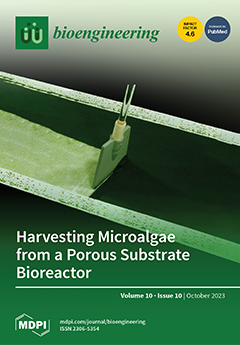Background: The electrical stimulation (stim) of retinal neurons enables blind patients to experience limited artificial vision. A rapid response outage of the stimulated ganglion cells (GCs) allows for a low visual sensation rate. Hence, to elucidate the underlying mechanism, we investigated different stim
[...] Read more.
Background: The electrical stimulation (stim) of retinal neurons enables blind patients to experience limited artificial vision. A rapid response outage of the stimulated ganglion cells (GCs) allows for a low visual sensation rate. Hence, to elucidate the underlying mechanism, we investigated different stim parameters and the role of the neuromodulator calcium (Ca
2+). Methods: Subretinal stim was applied on retinal explants (blind
rd1 mouse) using multielectrode arrays (MEAs) or single metal electrodes, and the GC activity was recorded using Ca
2+ imaging or MEA, respectively. Stim parameters, including voltage, phase polarity, and frequency, were investigated using specific blockers. Results: At lower stim frequencies (<5 Hz), GCs responded synaptically according to the stim pulses (stim: biphasic, cathodic-first, −1.6/+1.5 V). In contrast, higher stim frequencies (≥5 Hz) also activated GCs directly and induced a rapid GC spike response outage (<500 ms, MEA recordings), while in Ca
2+ imaging at the same frequencies, increased intracellular Ca
2+ levels were observed. Conclusions: Our study elucidated the mechanisms involved in stim-dependent GC spike response outage: sustained high-frequency stim-induced spike outage, accompanied by electrogenically clamped intracellular Ca
2+ levels at elevated levels. These findings will guide future studies optimizing stim paradigms for electrical implant applications for interfacing neurons.
Full article






